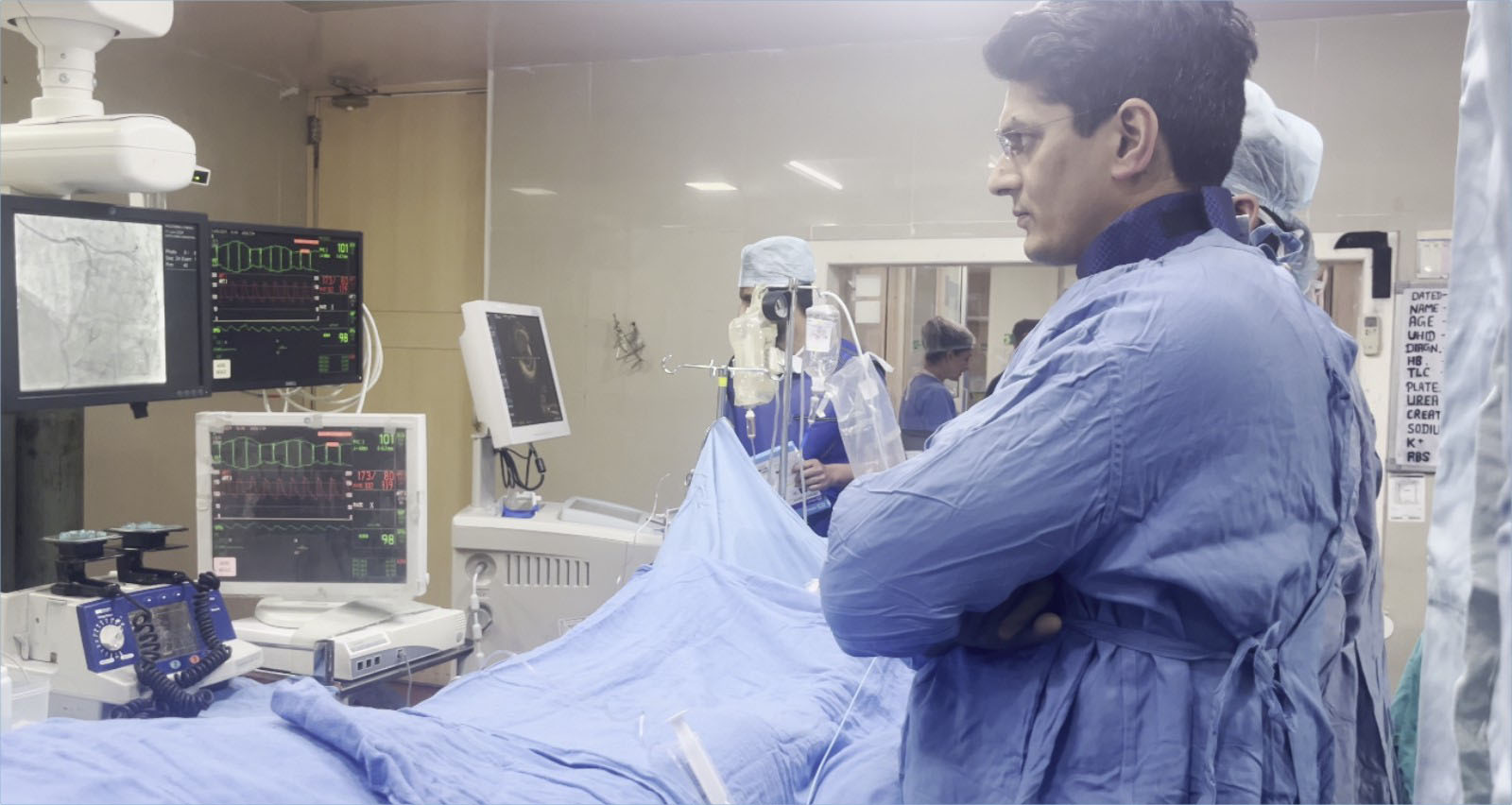- +91 6284941359
- info@drrakeshsharmacardiologist.com
- Livasa Hospital, Sec 71, Mohali

Percutaneous transluminal coronary angioplasty (PTCA) or Coronary Angioplasty is a minimally invasive Procedure aimed at reopening the flow of blood through constricted or blocked blood vessels. It is performed most often on coronary arteries, but is also done on other arteries, such as those in the legs-peripheral angioplasty. Here’s a detailed look at the procedure:
Angioplasty is the process of widening narrowed or blocked arteries by threading a catheter with a balloon on the end through the artery, thus opening the artery and improving blood flow. It may also be performed with the placement of a stent (a small metal mesh cylinder that remains after the balloon is inflated and removed). The stent keeps the artery open.
An inserted catheter in a blood vessel, usually in the groin or at the wrist, is advanced to the site of obstruction under the guidance of an imaging modality, usually fluoroscopy. Inflating the Balloon After the catheter reaches the site of the blockage, a balloon at the catheter tip inflates and compresses the plaque against the artery wall, expanding the vessel and reestablishing flow.
Angioplasty is minimally invasive with a rather short convalescence period in comparison with open surgery; therefore, this is an option for many patients with one form of arterial blockage or another.